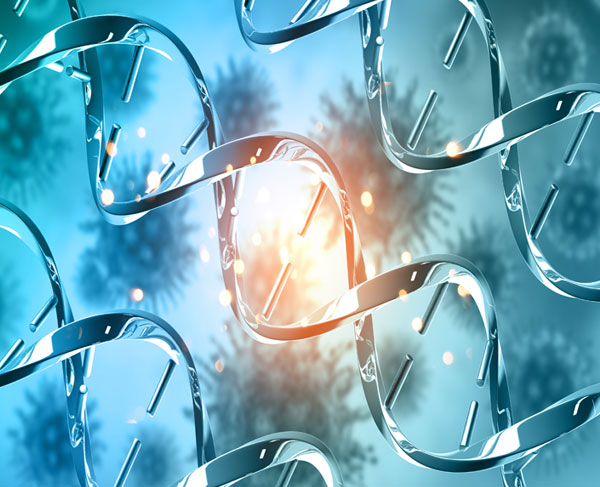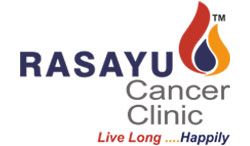Cancer Types
- Bladder Cancer
- Bone Cancer
- Breast Cancer
- Cervical Cancer
- Colorectal Cancer
- Endometrial Cancer
- Head & Neck Cancer
- Kidney Cancer
- Laryngeal Cancer
- Leukaemia
- Liver Cancer
- Lung Cancer
- Multiple Myeloma
- Nasopharyngeal Cancer
- Non-Hodgkin's Lymphoma
- Oesophagus Cancer
- Oral Cancer
- Ovarian Cancer
- Pancreatic Cancer
- Prostate Cancer
- Skin Cancer
- Stomach Cancer
- Testicular Cancer
- Thyroid Cancer
Opening Hours
- Monday - Saturday 10:00 am - 7.00 pm

Leukaemia
- Leukaemia is a cancer of blood cells (and therefore sometimes referred to as Blood cancer).
- It is ranked 10 th as the most prevalent cancer type and it comprises 2.4% of the total cancer cases per year as per Globocan 2018.
- The death rate of this cancer is 3.2%.
- Leukaemia may be divided into acute and chronic, myeloid and lymphatic.
- The National Cancer Institute reports the percentage of 5 year survival rate for each type of leukaemia – ALL – 68.6%, AML – 28.3%, CLL- 85.10% and CML – 69.2%.
- Types of Leukaemia
– Chronic myeloid leukaemia (CML)
– Acute lymphoid leukaemia (ALL)
– Chronic lymphoid leukaemia (CLL):
Causes
- Previous chemotherapy or radiation therapy.
- Exposure to high doses of radiation or to benzene (found in unleaded gasoline, tobacco smoke, chemical production facilities).
- Family history.
- Genetic abnormality, such as an abnormality on chromosome 22 (also known as the Philadelphia chromosome).
- Genetic disorders, such as Down syndrome and Fanconi anemia.
Following are agents with sufficient evidence as risk factors to Leukaemia
- Azathioprine.
- Benzene.
- Epstein-Barr virus.
- Fission products, including Strontium-90.
- Formaldehyde.
- Helicobacter pylori.
- Hepatitis C virus.
- Human Immunodeficiency virus type 1.
- Rubber production industry.
Following are agents with limited evidence as risk factors to Leukaemia
- Bischloroethyl nitrosourea (BCNU).
- DDT.
- Firefighters, occupational exposure.
- Hepatitis B virus.
- Magnetic fields with extremely low frequency (childhood leukaemia).
- Malaria (caused by infection with Plasmodium falciparum in holoendemic areas).
- Nitrogen mustard gas used for chemical warfare.
- Painting (childhood leukaemia from maternal exposure).
- Ataxia tellangiectasia- a neurological degenerative disease.
- Li Fraumeni syndrome – a genetic disease that further leads to cancer.
- Klinefelter syndrome- a disease where there is low testosterone and a less muscle mass over the body.
- Fanconi anemia – a genetic bone marrow disease that reduces production of blood cells.
- Wiskott-Aldrich syndrome- is a rare X-linked recessive disease with symptoms like eczema, thrombocytopenia (low platelet count), immune deficiency, and bloody diarrhea (secondary to the thrombocytopenia).
- Bloom syndrome – is a rare genetic disorder characterized by short stature, predisposition to the development of cancer, and genomic instability.
- Eosinophilic leukaemia can very rarely be caused by a genetic mutation that develops during a person’s life because of environmental factors, smoking, and chemical or radiation exposure.
- However, no specific cause can be found for most patients with eosinophilic leukaemia.
- For most people with Leukaemia, there’s no way to identify what causes it.
Signs and Symptoms
- Fever or chills.
- Persistent fatigue, weakness.
- Frequent or severe infections.
- Losing weight without trying.
- Swollen Lymph nodes, enlarged Liver or Spleen.
- Easy bleeding or bruising.
- Recurrent nosebleeds.
- Tiny red spots on your skin (petechiae).
- Excessive sweating, especially at night.
- Bone pain or tenderness etc.
Physical Examination and Investigations
- Physical Examination and History.
- Biopsy test
This is done to confirm diagnosis, where the bone marrow is removed using a long, thin needle and the sample is sent to a laboratory to look for Leukaemia cells. Bone marrow has both a solid and a liquid part. A bone marrow aspiration removes a sample of the fluid with a needle. Tests are performed on both the solid and the liquids aspirated for diagnosis.
- Biomarker Investigation
Peripheral blood count with blood film is taken for study to demonstrate the presence of abnormal blood cells - Molecular and genetic testing
Doctor recommend the test to identify specific genes, proteins, and other factors involved in the leukaemia. Examining the genes in the leukaemia cells reveals further details of the type
Treatment
- To plan personalised treatment for each individual patient as every individual is different even if they have the same type of cancer.
- To improve health related quality of life (QOL) in all types and stages of cancer patients.
- To plan for partial or total regression of tumour depending on the nature of tumors.
- To increase overall survival (OS) of patients.
- To increase disease free survival (DFS) where complete resection of tumour is achieved.
- To provide a treatment option to patients who are refractory to conventional treatments like chemotherapy / radiotherapy / immunotherapy etc.
- To reduce the rate of growth of the tumor in recurrent and advanced staged cases.
- To increase progression free survival in advance cases.
- To reduce impact of symptoms related to progression of disease.
- To improve confidence of patients.
- To provide palliative support in end-of- life cancer cases.
- To add happiness and extension of life to cancer patients.
- To compliment other therapies like chemotherapy, radiotherapy in a synergistic way.
- To reduce severity or adverse effects of other conventional treatment. This reduces incidence and frequency of hospitalization.
- It is pertinent to note that Rasayu Cancer Clinic does not claim or blame anything while communicating any aspect to cancer patients.
- Rasayu Cancer Clinic focuses on Ayurveda fundamental based therapies.
- Rasayu Cancer Clinic believes in continuous improvement in service and science.
- Rasayu Cancer Clinic always advocates patient centric approach which leads to long and happy life of cancer patients.
- Every patient has a right to choose the therapy.
- Rasayu Cancer Clinic never imposes Rasayana therapy on patients but helps them to take the right decision, hence making patients/ relatives well aware about the disease and possible outcomes along with its risk benefit and cost benefit ratios.
- Rasayu Cancer Clinic is well connected with global updates in cancer care and therapies, through advisors and collaborations with national and international institutes.
- The objective of treatment for Leukaemia is to destroy the Leukaemia cells.
- Allow normal cells to form in bone marrow.
- Treatment decisions are based on the kind of Leukaemia, its stage and age and general health of the patient.
Acute Lymphoid Leukaemia
- Chemo Therapy, also called induction therapy, kills Leukaemia cells in the blood and bone marrow to induce remission. Treatments include chemotherapy and corticosteroids.
- Consolidation Therapy kills any Leukaemia cells that may be present even though they do not show up in tests. If these cells regrow, they could cause a relapse. Treatments include more chemotherapy and may include stem cell transplant.
- Maintenance Therapy is given to prevent residual Leukaemia cells from growing. This may be done using lower doses of chemotherapy than those used during induction or consolidation.
- Chemotherapy is given with pills and once-a-month intravenous treatment. Maintenance is often continued for up to 3 years.
- Side Effects of conventional treatment in Leukaemia – Click Here
- Side effects of Chemotherapy – Click Here
- Adverse drug reactions (ADRs) of Chemotherapy – Click Here
Acute Myeloid Leukaemia
- Induction of Remission kills Leukaemia Cells in the blood and bone marrow to induce remission. Chemotherapy is given by intravenous (IV) treatment. Induction usually lasts 4 weeks, with a week of chemotherapy and then 3 weeks for bone marrow recovery.
- Post-Remission Therapy kills any Leukaemia cells that may be present even though they don’t show up in tests. This therapy may involve getting additional chemotherapy or a stem cell transplant.
- For subtype of AML called acute promyelocytic leukaemia, other medicines, such as arsenic trioxide and all-trans retinoic acid (ATRA) can be given.
Chronic Lymphoid Leukaemia
Treatment choices for CLL include :
- Radiation Therapy may be used to treat Lymph nodes that are swollen from too many abnormal lymphocytes.
- Chemotherapy is often a combination of medicines and may include monoclonal antibodies.postoperative setting. Indications and technique will depend on anatomical location of the tumor. The major potential advantage of this therapy is functional preservation, particularly of speech and swallowing. Acute skin reactions, mucositis are more common side effects of radiotherapy.
Chronic Myeloid Leukaemia
The most common choices for treatment of CML are:
- Targeted therapy with a Tyrosine Kinase Inhibitor. This is the first treatment used for CML.
- Stem Cell Therapy.
- Side effects of chemotherapy for acute myeloid leukaemia (AML) – Click Here
- The challenges facing elderly AML treatment – Click Here
- CAR-T therapy for leukaemia : Progress and Challenges – Click Here
Rasayu Cancer Clinic Rasayan Treatment Protocol – To know more please click here
Rasayu Therapy is recommended for those :
- Who voluntarily opted for this treatment as their first choice.
- Who are disenchanted with the past treatments.
- Who do not see any other options of treatments.
- Who are looking for personalized treatment plan or precision medicine.
- Who desire a convenient home-based oral therapy which is easy for consumption.
- Who are susceptible to acquire hospital borne infections / complications, hence not willing to be hospitalised.
- Who are looking for favourable risk benefit ratio.
- Who desire to improve Quality of Life benchmarks based on global standards and monitored regularly.
- Who wants to be involved in decision making for choice of treatment.
- Who are willing to be involved in monitoring the efficacy of Rasayana Therapy.
- Who believe in the transparency of the process by conducting regular investigations by biochemical parameters/ hi tech imaging techniques like PET scan etc.
- Who are looking for professionals being sensitive to the patient, the care givers and the family.
- Who desire to take even with other treatments including Chemotherapy / Radiotherapy.
Disclaimer : This Website contains certain links such as You Tube links, research paper links / website links / audio visuals / internet information already available in public domain. The information contained in the audio visuals is meant for use by qualified Medical Professionals. The content of the links etc has been made available for informational and educational purposes only. Rasayu Cancer Clinic and its associates do not make any warranties with respect to the accuracy, applicability, fitness, or the completeness of the content of such links etc. The information contained in such links represents the views and opinions of the original creator of such links and are not views endorsed by the Rasayu fraternity.


